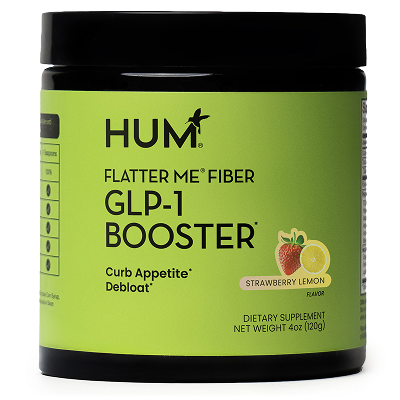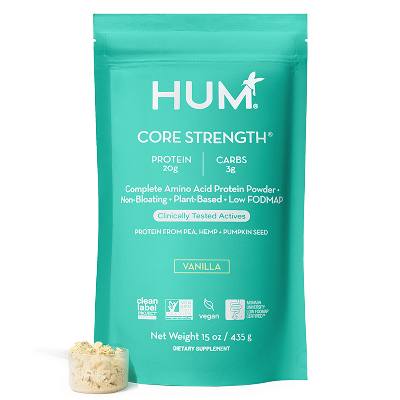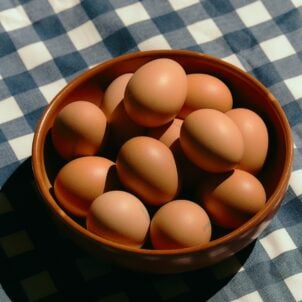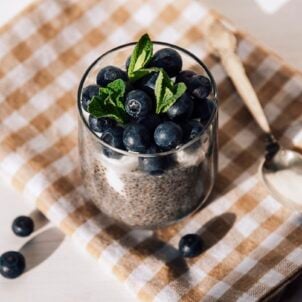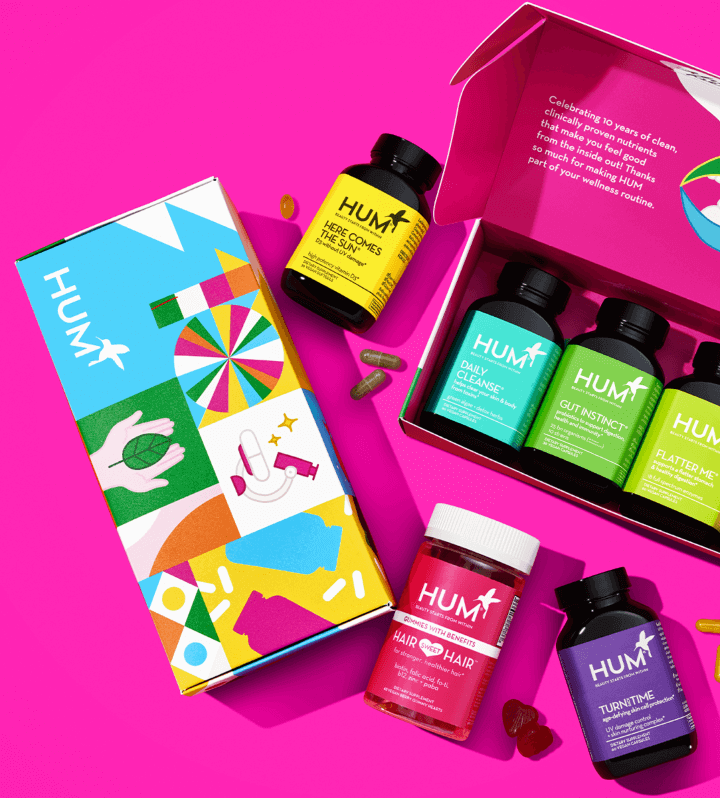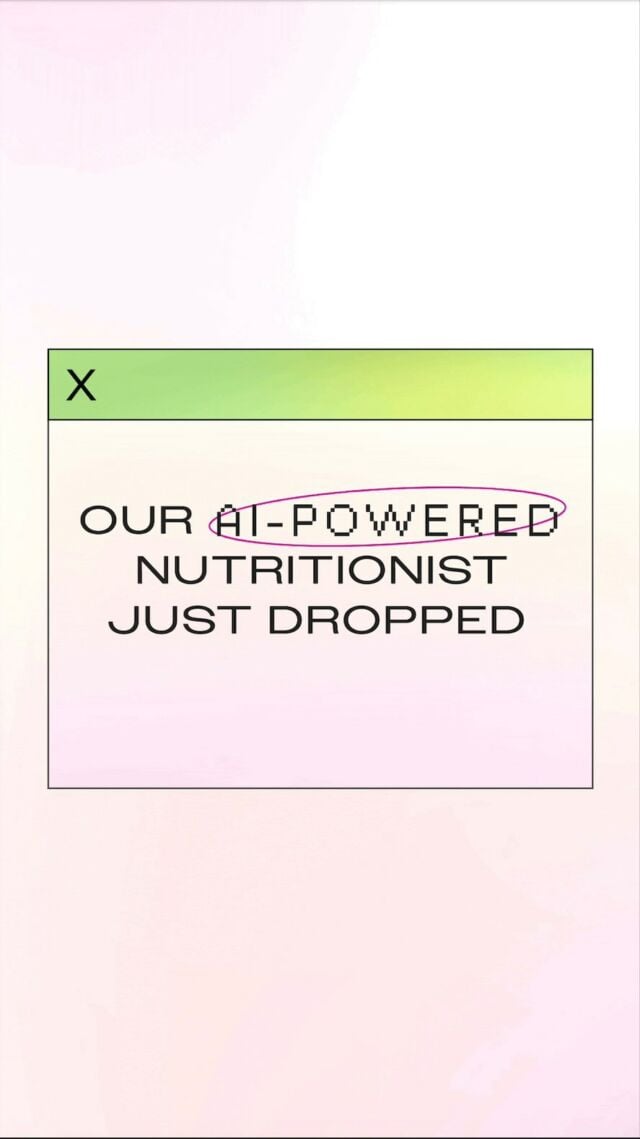How to Build Your Perfect 7-Day GLP-1 Boosting Diet Plan for Weight Loss
Looking for the perfect GLP-1 boosting meal plan? You’re in the right place!
The GLP-1 craze isn’t going away anytime soon—and the good news is that you don’t necessarily need medications to boost your levels, support your metabolism, and manage your weight. (Speaking of, HUM’s Flatter Me Fiber and Best of Berberine can seamlessly offer this support—no prescription required.)
“GLP-1 is a powerful hormone your body produces to regulate blood sugar, appetite, and digestion,” begins Kim Shapira, MS, RD, a celebrity dietitian based in Los Angeles. “You can boost your GLP-1 levels with consistent habits that work with your body, not against it.” She offers simple rules to support GLP-1 production naturally through easy and consistent lifestyle shifts—including walking 10,000 steps a day, drinking eight glasses of water, and getting at least seven hours of sleep nightly. On the dietary front, she advises eating when you’re hungry, eating what you love (and will love your body back), and eating without distraction. But with these points in mind, what should actually make it onto your plate?
Keep reading to discover the principles of building a GLP-1 boosting diet, followed by a week’s worth of healthy meal ideas for weight loss.
How to Build a GLP-1 Boosting Diet Plan
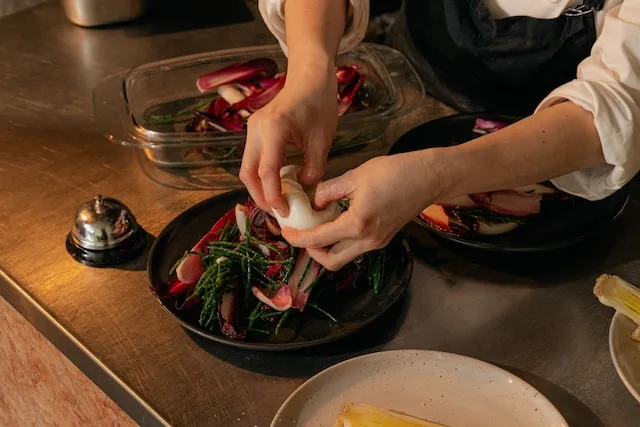
The two things you’ll want to prioritize most to boost GLP-1 levels and support weight loss are protein and fiber, says Marisa Landetta, RD, a gluten-free and plant-based dietitian specializing in weight management in Lehi, Utah.
She advises aiming for 25 to 30 grams of protein per meal, which could look like:
- 5 oz of lean ground turkey
- 4 oz ground beef
- 4 oz chicken breast
- 5 oz tempeh
- 10 oz tofu
- 1/2 cup of dry textured vegetable protein
From there, Landetta suggests adding produce as your main source of fiber at meals. (As a friendly reminder, women should aim for about 25 grams of fiber per day, whereas men require closer to 38 grams, though exact fiber needs vary.) This may include:
- 3 oz side salad with a handful each of 4 to 5 veggies (adding 1 oz of cheese for extra protein or 1 oz of nuts/seeds for extra plant protein and fiber)
- 5 oz of cooked veggies
If and when you add other carbohydrate sources, it’ll help to be deliberate about your yield. “It’s very easy to overeat carbs, so take the time to measure or portion them out,” she shares. To keep your weight goals on track, opt for good-for-you sources such as:
- Whole-grain toast
- Farro
- Brown rice
- Quinoa
7 Days of Healthy Meals for Weight Loss
Naturally, we don’t expect you to make 21 unique meals each week. That said, check out Shapira’s recommendations for healthy, weight-loss-friendly meal ideas below, adjusting whenever you see fit and repeating as you’d like. (Of course, you can also mix and match from Landetta’s suggestions above.)
Breakfast
- Greek yogurt with sliced banana, almond butter, and hemp seeds
- Scrambled eggs with sautéed spinach and avocado on whole grain toast
- Chia pudding made with almond milk, topped with flaxseed, cinnamon, and berries
Lunch
- Tuna salad lettuce wraps with chopped veggies and olive oil, and lemon
- Chicken and quinoa salad with cucumbers, cherry tomatoes, and feta
- Lentil and farro bowl with roasted sweet potato, kale, and tahini
Dinner
- Baked salmon with roasted broccoli and olive oil glazed sweet potatoes
- Stir fry with tofu, brown rice, edamame, bell peppers, and sesame oil
- Turkey meatballs with zucchini noodles and marinara
Tips and Tricks
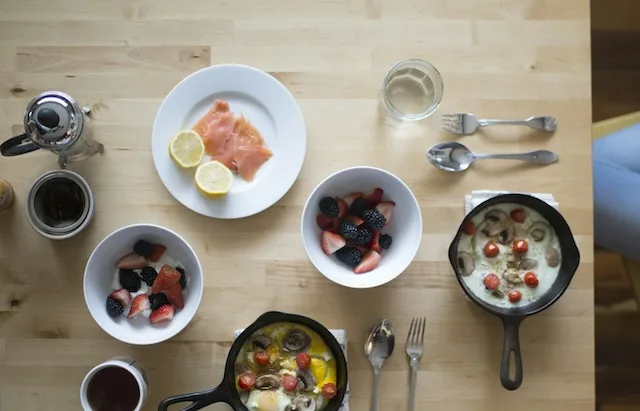
Many of these healthy meals for weight loss will keep well for a few days if you batch prep them in advance, thus lightening your load in the kitchen for the week. You can also modify each meal above by swapping out the protein source or fixings to enjoy new flavors and textures that enliven your palate, not to mention introduce diverse nutrients into your rotation.
Plus, you can always get creative with leftovers across different meals and mealtimes. For example, Shapira offers the following flexible hacks for leftovers:
- Tossing roasted veggies into a farro or quinoa grain bowl, topping with an egg and tahini
- Flaking salmon over mixed greens with avocado, pumpkin seeds, and vinaigrette dressing
- Combining leftover lentils or quinoa with black beans, corn, and salsa to make a wrap or taco filling
- Adding stir-fry leftovers into an egg scramble for breakfast
In addition, it helps to have healthy snacks on hand to tide you over in between meals. The same principle of pairing protein and fiber applies to boost your GLP-1 levels and thus encourage satiety and weight loss. Per Shapira, great snack options to have on your GLP-1 boosting diet plan include:
- Cottage cheese with berries and chia seeds
- Sliced apples with almond butter
- Hummus with carrots and whole-grain crackers
If you crave something new and quick to make—whether for breakfast, as a snack, or to enjoy after a workout—Landetta suggests making a protein- and fiber-rich smoothie. Here, she offers the foundation for any recipe so it’s nutritious and flexible for whatever tastes you prefer:
- 1 cup liquid base (milk, alt milk, water)
- 1 cup produce (including your fruit of choice and leafy greens)
- 1 serving of protein powder (such as HUM’s vegan, low-FODMAP Core Strength)
- Add-ins of choice (e.g., chia, hemp, flax, nut butter)
The Takeaway on Healthy Meals for Weight Loss
The dietitian-approved healthy meals for weight loss shared above should be used as inspiration, rather than a bible, to break ground on your GLP-1 boosting journey. No matter what you choose to whip up, it’s important to build your meals with intention—which isn’t the same thing as rigidity or restriction. “When you keep real hunger and the goal of feeling good in your body in mind, your GLP-1 hormones respond naturally,” says Shapira. “You feel full longer, your cravings settle, and your energy improves.”
Best of all, when you’re intentional yet allow for flexibility, preparing healthy meals for weight loss will be sustainable and enjoyable. “Start with simple, stick to what you love, and let your body take the lead,” Shapira concludes.
